
The spaghetti Western is a broad subgenre of Western films produced in Europe. It emerged in the mid-1960s in the wake of Sergio Leone's film-making style and international box-office success. The term was used by foreign critics because most of these Westerns were produced and directed by Italians.

A Fistful of Dollars is a 1964 spaghetti Western film directed by Sergio Leone and starring Clint Eastwood in his first leading role, alongside Gian Maria Volonté, Marianne Koch, Wolfgang Lukschy, Sieghardt Rupp, José Calvo, Antonio Prieto and Joseph Egger. The film, an international co-production between Italy, West Germany and Spain, was filmed on a low budget, and Eastwood was paid $15,000 for his role.

Blood and Black Lace is a 1964 giallo film directed by Mario Bava and starring Eva Bartok and Cameron Mitchell. The story concerns the brutal murders of a Roman fashion house's models, committed by a masked killer in a desperate attempt to obtain a scandal-revealing diary.

The Girl Who Knew Too Much is a 1963 Italian giallo film. Directed by Italian filmmaker Mario Bava, the film stars John Saxon as Dr. Marcello Bassi and Letícia Román as Nora Davis. The plot revolves around a young woman named Nora, who travels to Rome and witnesses a murder. The police and Dr. Bassi don't believe her, since a corpse can't be found. Several more murders follow, tied to a decade-long string of killings of victims chosen in alphabetical order.

The Great Silence is a 1968 revisionist spaghetti Western film directed and co-written by Sergio Corbucci. An Italian-French co-production, the film stars Jean-Louis Trintignant, Klaus Kinski, Vonetta McGee and Frank Wolff, with Luigi Pistilli, Mario Brega, Marisa Merlini and Carlo D'Angelo in supporting roles.

Castle of Blood is a 1964 horror film directed by Antonio Margheriti and Sergio Corbucci. The film stars Barbara Steele, Arturo Dominici and Georges Rivière. The film was initially commissioned to director Sergio Corbucci, who had Gianni Grimaldi and Bruno Corbucci set to write the film. A scheduling conflict led to Corbucci's friend Margheriti being hired to complete the film. To avoid going over time, Corbucci was brought in to film one scene.
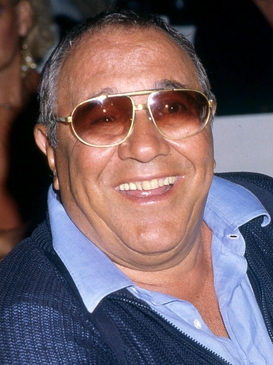
Sergio Corbucci was an Italian film director, screenwriter and producer. He directed both very violent Spaghetti Westerns and bloodless Bud Spencer and Terence Hill action comedies.
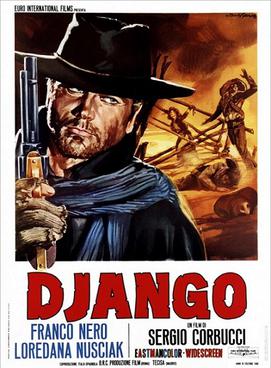
Django is a 1966 spaghetti Western film directed and co-written by Sergio Corbucci, starring Franco Nero as the title character alongside Loredana Nusciak, José Bódalo, Ángel Álvarez and Eduardo Fajardo. The film follows a Union soldier-turned-drifter and his companion, a mixed-race prostitute, who become embroiled in a bitter, destructive feud between a gang of Confederate Red Shirts and a band of Mexican revolutionaries. Intended to capitalize on and rival the success of Sergio Leone's A Fistful of Dollars, Corbucci's film is, like Leone's, considered to be a loose, unofficial adaptation of Akira Kurosawa's Yojimbo.

Navajo Joe is a 1966 spaghetti Western film directed by Sergio Corbucci and starring Burt Reynolds as the titular Navajo Indian who opposes a group of bandits responsible for killing his tribe.
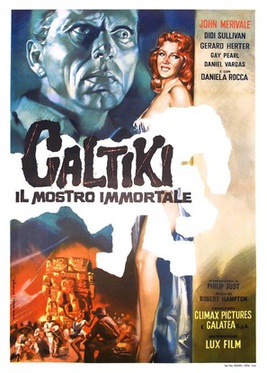
Caltiki – The Immortal Monster is a 1959 black-and-white science fiction-horror film with similarities to The Blob that was released in the previous year. The film's storyline concerns a team of archaeologists investigating Mayan ruins, who come across a creature that is a shapeless, amorphous blob. They manage to defeat it using fire, while keeping a sample of the creature. Meanwhile, a comet, which previously passed near the Earth around the time of the collapse of the Mayan civilization, is due to return, raising the possibility of a connection between the creature and the comet.
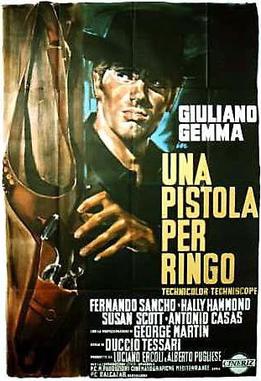
A Pistol for Ringo is a 1965 Spaghetti Western, a joint Italian and Spanish production. Originally written and directed by Duccio Tessari, the film's success led to a follow-up, The Return of Ringo, later that year, which, in spite of sharing the same name for the titular character, is not a sequel to this film and deals with an entirely new character and storyline.

Balsamus, l'uomo di Satana is a 1970 Italian film. It is the debut film of director Pupi Avati.
Adriano Bolzoni was an Italian journalist, writer and film director.
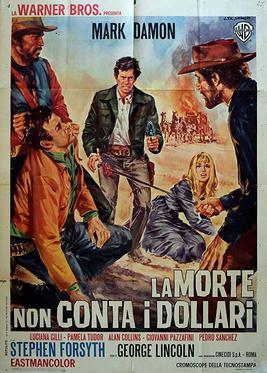
La morte non conta i dollari 1967 Italian spaghetti Western film directed by Riccardo Freda. The film is about Lawrence White who returns to his hometown of Owell Rock with his sister to avenge the father's death at the hands of a gang. The leader of the gang, Doc Lester has recently appointed himself the gunslinger Boyd as the new sheriff.

Per il gusto di uccidere is the 1966 Italian Spaghetti Western film debut directed by Tonino Valerii. It is also the first film to use the camera system known as 2P. It was filmed in Almería. It is produced by Francesco Genesi, Vincenzo Genesi, Daniele Senatore, Stefano Melpignano and Jose Lopez Moreno, scored by Nico Massi and edited by Rosa G. Salgado.

Go Gorilla Go is a 1975 Italian poliziottesco film directed by Tonino Valerii.

The Young, the Evil and the Savage, also known as Schoolgirl Killer, is a 1968 Italian giallo film directed by Antonio Margheriti.

The Road to Fort Alamo is a 1964 Spaghetti Western film directed by Mario Bava.

Savage Gringo is a 1966 Western film starring Ken Clark. The film is about a drifter who protects a rancher couple from a ruthless landowner. Under its Italian title, Savage Gringo was one of numerous Spaghetti Westerns retitled to take advantage of the success of Duccio Tessari's successful Ringo duology.


















